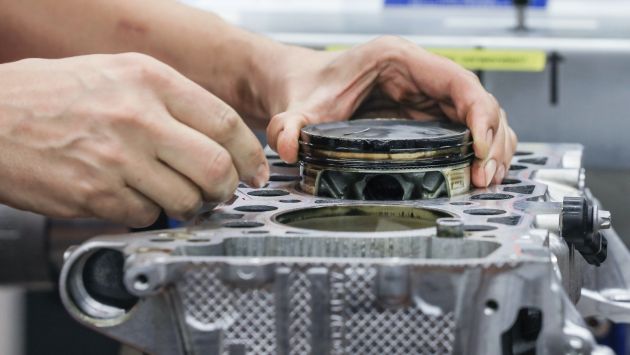A car such as the 991-generation Porsche 911 GT2 RS probably wouldn’t be found wanting for more power and performance, given that it produces 700 PS and 750 Nm of torque, which propels it from 0-100 km/h in 2.8 seconds and a maximum of 340 km/h. Porsche has nonetheless found a way to give the motorsport division Neunelfer exactly that with 3D-printed pistons.
The 3D-printing method enables the pistons to be manufactured with a structure that is optimised for the loads acting on the pistons, and results in the advanced development project items which weigh 10% less than the forged pistons in the original series production engines. In addition to weight savings, the new-design pistons feature integrated and closed cooling ducts in the piston crown which could not be produced with conventional methods.
“Thanks to the new, lighter pistons, we can increase the engine speed, lower the temperature load on the pistons and optimise combustion. This makes it possible to get up to 30 PS more power from the 700 PS biturbo engine, while at the same time improving efficiency,” said Frank Ickinger from Porsche’s advance drive development department.
These new pistons have been manufactured from high-purity metal powder using a laser metal fusion (LMF) process. Here, a laser beam heats and melts the powder surface corresponding to the part contour. The project was initiated by Porsche, with development partners Mahle and Trumpf, while quality and performance capability of the components were validated with measurement technology from Zeiss.
The additive manufacturing process is already in use by Porsche in several areas. Since May, 3D-printed bodyform full bucket seat has been available for its 911 and 718 sports cars, where the cushion and backrest surfaces of the seat are partly made by 3D-printing. This will enable customers to choose between three firmness levels for the comfort layer of their seats in the future, said Porsche.
This technology also benefits the upkeep of older models, where the additive manufacturing process is used to reproduce plastic, steel and alloy spare parts which were previously no longer available. Around 20 reproduced parts for classic Porsche models are currently manufactured using additive processes, the company said, and the release lever for the clutch of a Porsche 959, for example, is made in a 3D printer.
The additive manufacturing technology is also ‘technically and economically interesting’ for Porsche in special and small series production, as well as in motorsports applications, thus offering significant potential in product and process innovations, it said.
Source: Read Full Article



